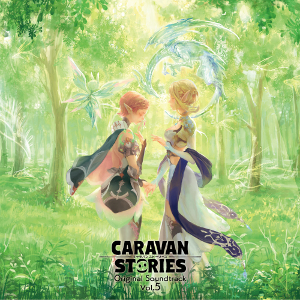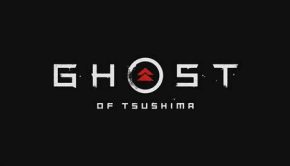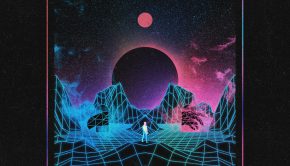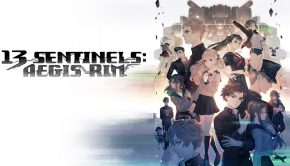Caravan Stories Original Soundtrack Vol. 5
 |
Album Title: Caravan Stories Original Soundtrack Vol. 5 |
| Record Label: Basiscape Records |
|
| Catalog No.: BSPE-1075 |
|
| Release Date: October 31, 2018 |
|
| Purchase: Buy at iTunes |
Overview
Caravan Stories is a mobile/PC MMORPG released by Aiming in 2017 and features the talents at Basiscape helming the music. The Caravan Stories Original Soundtrack Vol. 5 is the fifth of eight planned releases that will span through January 2019. Featuring the music from Basiscape veterans Yoshimi Kudo and Azusa Chiba, in addition to relative newcomers, Kazuki Higashihara and Rikako Watanabe, what type of sound can be heard on this volume, which focuses on the elf areas of the game?
Body
The soundtrack for the elf portions of the game is composed primarily by Azusa Chiba. Opening the album is “Luwiera’s Forest,” a bright and upbeat tune with piano, harp, strings, and woodwinds. Of particular note are the strings and the overall jovial soundscape. The addition of acoustic guitar and ethereal backing vocals give it a grounded, yet mystic, touch. The “Nightscape” rendition slows the tempo and focuses more on woodwind, piano, and harp with some light strings and acoustic guitar accompaniment. The soundscape here is elevated even further with its light jazz influence in the piano. Chiba’s “Luwiera Town” features pizzicato strings, dulcimer, piano, and violin. The piano melody itself is quite beautiful and the violin portions are striking. In addition, there are some light electronic tones and a clear Celtic and jazz influence. The end result is an exquisite piece. “Mt. Schoffel” blend ethereal synths, sharp piano notes, dulcimer, and violin for a contemplative, wintry sound that also features some more invigorating moments with a flurry of woodwinds coupled with a strings section. The “Nightscape” version, arranged by Kazuki Higashihara, keeps many of these same elements, incorporates some plucked strings and an oboe, which helps bring some warmth to the piece. The end result still has an icy feel to it, but the end result is rather relaxing.
“Rocca Wetland” is a mix of glockenspiel, ethereal vocals, piano, woodwinds, and strings. The atmosphere itself is quite beautiful with the violin melody providing a somewhat haunting sound. Towards the end of the track, there is a more avant-garde section with vocals, but the end result is feels a bit mismatched with the rest of the soundscape. Fortunately, the “Nightscape” version fares better, giving the tune a more mystical sound and a slower tempo. The ethereal vocals are heard throughout the piece and since there aren’t any strange breaks in tempo and overall atmosphere, the end result is much stronger. “Tuntari Valley” is quite mysterious and blends violin, piano, plucked strings, and harp to create a lot of atmosphere. The melody itself is also quite nice and has a bit of a Japanese aesthetic to it. The “Nightscape” version is quite different, opening with some ominous strings, giving it a bit of a horror aesthetic, when in combination with the atmospheric accompaniment. Plucked strings combine with hard percussion hits and the addition of some more acoustic elements gives it a more rustic feel. Speaking of rustic, Chiba’s “Wolven Cape Rovanier” is a more atmospheric tune blending drums, cello, and guitar. It’s a melancholy and beautiful sound and has a very Western aesthetic to it.
In addition to the area music, Chiba was also responsible for some additional music, both story and battle related. The full version of “Iyarr’s Ancestral Song,” originally featured in Vol. 1 as a PV version, is an expanded version of the PV version and has a Renaissance-y piece full of acoustic guitar, piano, and Irish flute. The battle theme, “The Sword of Aurous,” is a tune full of piano, violin, and electronic textures. Ethereal vocals with some jazz influence in the piano make a great addition and the entire piece feels like it would fit right in a game like Final Fantasy XIII, stylistically speaking. Similarly, “Raging Spirits” is a bit more frenetic in its piano and violin approach, although chimes and some ethereal atmosphere help to break the tension in spots. Lastly, “Tenements of the Blue Spirit” is mysterious in its approach with piano, ethereal synths, and strings. The end result is atmospheric and beautiful.
The rest of the album is supported by Kazuki Higashihara, Rikako Watanabe, and Yoshimi Kudo. In addition to the area theme mentioned already, Higashihara was responsible for “Lappi Mine,” which, in my opinion, is certainly the best mine related tune to date. Harp, vocal chanting, and strings bring a mystical quality to it and the fact that it is more melodic in approach helps it to be more relatable. I’d also say this approach complements the percussion typically employed in these mine tunes quite nicely. Rikako Watanabe’s “Glenmore Fault Valley” and its “Nightscape” version are also some of the best area themes on this release. The former is mystical with its ethereal vocal backing while low brass, woodwind, and piano, help provide a stunning atmosphere that complements the beautiful melody performed by the strings section. The latter is a bit more haunting and mysterious, incorporating synths and glockenspiel, while the melody, primarily of woodwinds, brass, and violin, is elevated by choral backing. The end result is outstanding. Her other two tunes, “Aleia” and “Dark Corridor” provide different atmospheres. The former features vocals, harpsichord, and organ, giving off a religious tone, while the woodwinds and strings portray a more magical feeling. The latter is dark and ambient with tense strings, woodblock percussion, piano, and low brass. The end result is horror-esque in approach, but rather forgetful. Lastly, Yoshimi Kudo’s “Sailing to the City of Freedom -Elf-” is a choral heavy interpretation with a magical quality to it before transitioning to the section that is present in all such tunes of this nature. The vocal on this album is “Legend of the Wise King, Prologue,” a folksy tune full of acoustic guitar and featuring male vocals. The tune is contemplative, has a Celtic influence, and a beautiful melody. The performance itself is also rather bard-like in approach. It’s a nice tune and is certainly more enjoyable than some other vocal tunes throughout the series of CD releases.
Summary
The Caravan Stories Original Soundtrack Vol. 5 is another excellent entry in the series of soundtracks being released dedicated to the music of Caravan Stories. The supporting cast helps provide a bit more variety to the musical soundscape while Azusa Chiba offers a template of piano, vocals, and a more magical atmosphere to portray the elven areas. While not every tune is a winner, there are plenty of strong tunes on the album and is definitely one of the better releases in the serise. With the next release being dedicated to a race called the gessy, what types of sounds can be expected with Rikako Watanabe at the helm?
Do you agree with the review and score? Let us know in the comments below!
4.5
Posted on November 30, 2018 by Don Kotowski. Last modified on November 30, 2018.














